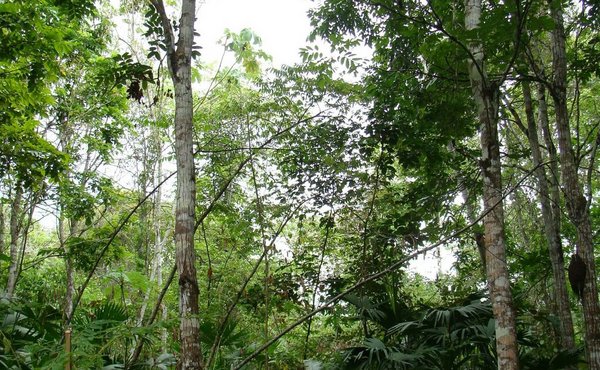 Read this article in French
Read this article in French- Share this article
- Subscribe to our newsletter
Does greater biodiversity bring economic benefits?
Ecosystems with relatively few plant species can be more advantageous economically than those with either just a single species or a large number of species: this is the conclusion reached by researchers at the Technical University of Munich (TUM) in a study published in January 2020.
The study shows that biodiversity and ecosystem functions seldom follow a steadily rising curve. Instead, the team found empirical and theoretical evidence of strictly concave or strictly convex relationships between biodiversity and economic value.
Even small increases in biodiversity can have economic benefits
However, the results do not mean that very biodiverse ecosystems do not merit protection, the researchers emphasise. Rather, they show that economic arguments alone are not enough for such biodiversity “hot spots”.
Conversely, the relationships show clearly the economic benefits which even small increases in biodiversity can have in farmland and forests. The newly-discovered relationships provide valuable information for future land use planning.
High biodiversity can reduce social costs
The greater the diversity of plants in an ecosystem, the better are the prospects for risk spreading, according to the researchers. This has implications for the insurance value of the ecosystem. As a result, the risk premium – the incentive that a risk-averse person needs to accept a higher level of risk – can be reduced by even a small change in the level of biodiversity.
The researchers identified that biodiversity has a high potential value above all in avoiding social costs. These are costs which are borne by the general public, for example air pollution. In considering social costs, the study provides economic arguments underlying the value of more diverse and mixed farming and forestry management systems, for example that biodiverse ecosystems need less fertiliser.
Evaluation of biodiversity depends on the goals
The researchers note that all the functions of an ecosystem are never equally positively connected with biodiversity. A forest, for example, has different functions, serving as a biotope for flora and fauna, supplying wood as a raw material, performing a protective function, for example by protecting soil or climate, and providing recreation.
Consolidating all the tasks of an ecosystem and calculating its value yields a maximum curve. Maximising biodiversity at the level of the ecosystem will not maximise the economic value in most cases, as the researchers show. This particularly applies where compromises are required between different services or different economic returns and risks. In these cases, an average level of biodiversity is the most advantageous.
(TUM/ile)
Read more:
More information at TUM website
Paul, C.; Hanley, N.; Meyer, S.T.; Fürst, C.; Weisser, W.W.; Knoke, T. On the functional relationship between biodiversity and economic value. Science Advances 29/01/2019





Add a comment
Be the First to Comment